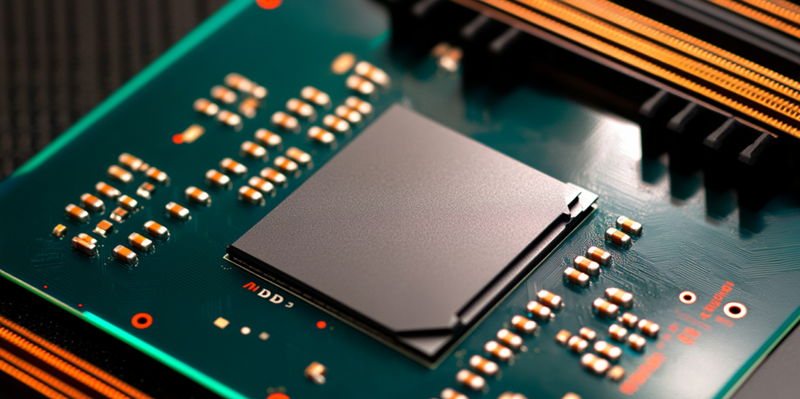In a move that underscores its continuing commitment to pushing the boundaries of processor technology, AMD has revealed the Krackan Point, a Zen 5-based APU that features an innovative 6-core 3+3 configuration. This revelation was made through a recent Geekbench AI benchmark test, sparking interest and excitement in the tech community. The importance of this APU lies in its potential to enhance AMD’s already impressive portfolio with significant technological advancements, particularly in AI processing capabilities. The Krackan Point APU, identified under the moniker Ryzen AI 5, exhibited 6 cores that are spread across dual clusters. In benchmarking tests, it managed to achieve 2019 points in Single Precision, 1276 in Half Precision, and an impressive 3773 in Quantization scores on Geekbench.
Given it is an early engineering sample, these scores might not seem particularly standout; however, they highlight some crucial specifications. The APU features a 6-core/12-thread CPU component integrated into an ASUS laptop, denoted by the identifier AMD Engineering Sample 100-000001600-40_Y. This setup includes two clusters of cores – each cluster comprising 3 cores from Zen 5 and Zen 5c architectures. It remains speculative whether these clusters are arranged on the same chiplet (CCD) or on dual chiplets, adding an element of anticipation for further technical dissection. An interesting aspect is how this arrangement mirrors other similar AMD configurations like the Ryzen 5 8500G, which features a 2+4 setup in a single cluster, suggesting that AMD might adopt a dual-CCD approach with the Krackan Point CPU.
A Deeper Look at Krackan Point’s Architecture and Variants
Beyond the technical prowess exhibited, some more insight into the Krackan Point family reveals additional configurations such as the Ryzen AI 7 350 – an eight-core mid-range variant – and the Ryzen AI 7 300, which seems to be rebranded under different purposes, including for Ryzen AI Pro applications like Strix Point. The Krackan Point’s expected debut in early 2025 is poised to focus on affordable, high-performance platforms. This timeline fits well with AMD’s strategic push to offer technically advanced yet cost-efficient solutions to mainstream and budget segments. Moreover, there are speculations that the Krackan Point might also surface in next-gen gaming consoles, possibly under the name Ryzen Z2 Extreme, promising substantial improvements in both performance and battery efficiency compared to its predecessor, the Z1 Extreme.
AMD’s strategy with the Krackan Point series is apparently to provide solutions that are both affordable and potent for mainstream users, enhanced with advanced AI functionalities as indicated by the variety of planned SKUs. While initial benchmarks reflect modest scores, largely due to the prototype nature of the sample, they still emphasize AMD’s direction towards integrating AI processing capabilities within their processors. A comprehensive look at the configurations reveals a range of core counts, clock speeds, cache sizes, and integrated GPUs, all tuned to support varying levels of AI capabilities. For example, the Ryzen AI 9 HX 375, the flagship 12-core model, touts 385 AI Tera Operations Per Second (TOPs) along with a Radeon 890M GPU, reflecting high-performance potential within a 28W power envelope, which is adjustable from 15W to 54W.
Implications and Future Prospects for Krackan Point
AMD has underscored its commitment to advancing processor technology by unveiling the Krackan Point, a Zen 5-based APU featuring a unique 6-core 3+3 configuration. The announcement came through a recent Geekbench AI benchmark test, generating excitement in the tech world. This APU, dubbed Ryzen AI 5, is significant for its potential to enhance AMD’s portfolio, especially in AI processing capabilities. The Krackan Point APU boasts 6 cores split across dual clusters, scoring 2019 in Single Precision, 1276 in Half Precision, and a remarkable 3773 in Quantization on Geekbench.
Despite being an early engineering sample, these results highlight crucial specifications. The APU integrates a 6-core/12-thread CPU into an ASUS laptop, noted as AMD Engineering Sample 100-000001600-40_Y. Each core cluster includes 3 cores from Zen 5 and Zen 5c architectures. Speculation remains whether these clusters are on the same chiplet (CCD) or separate, building anticipation for further technical details. This setup mirrors AMD’s Ryzen 5 8500G’s 2+4 configuration in a single cluster, hinting at a possible dual-CCD approach with Krackan Point.

